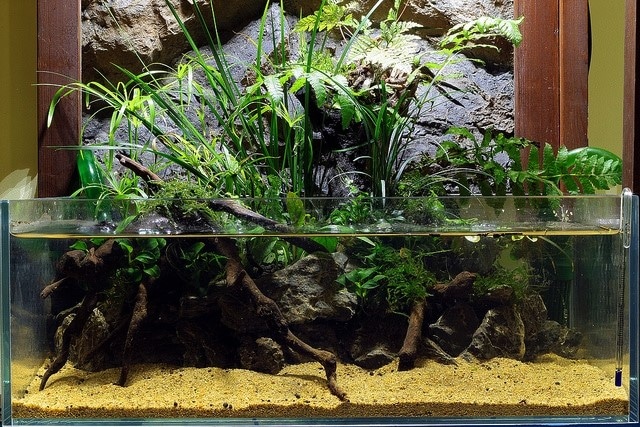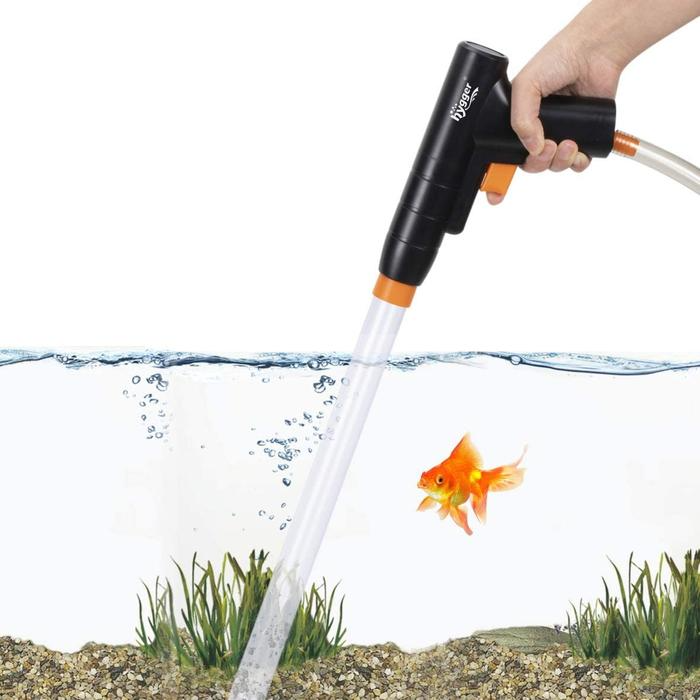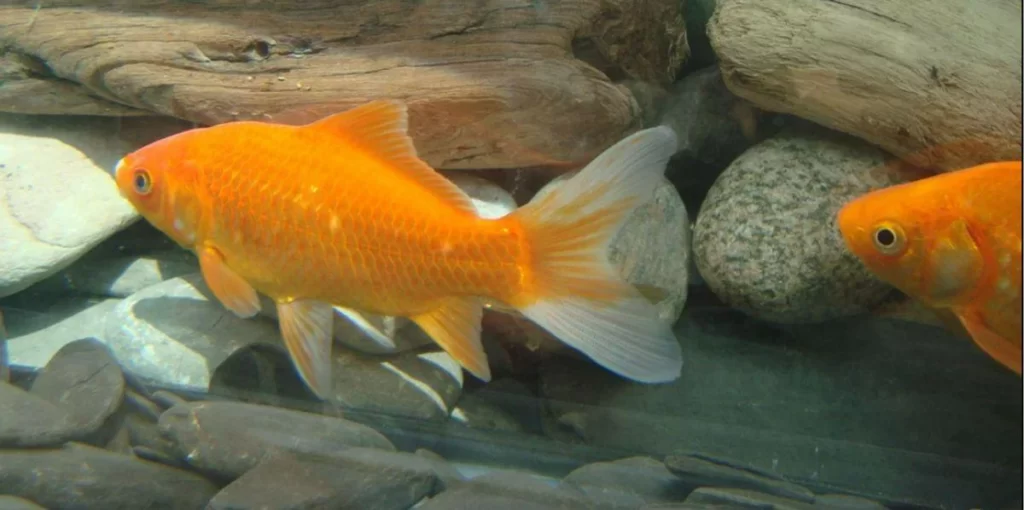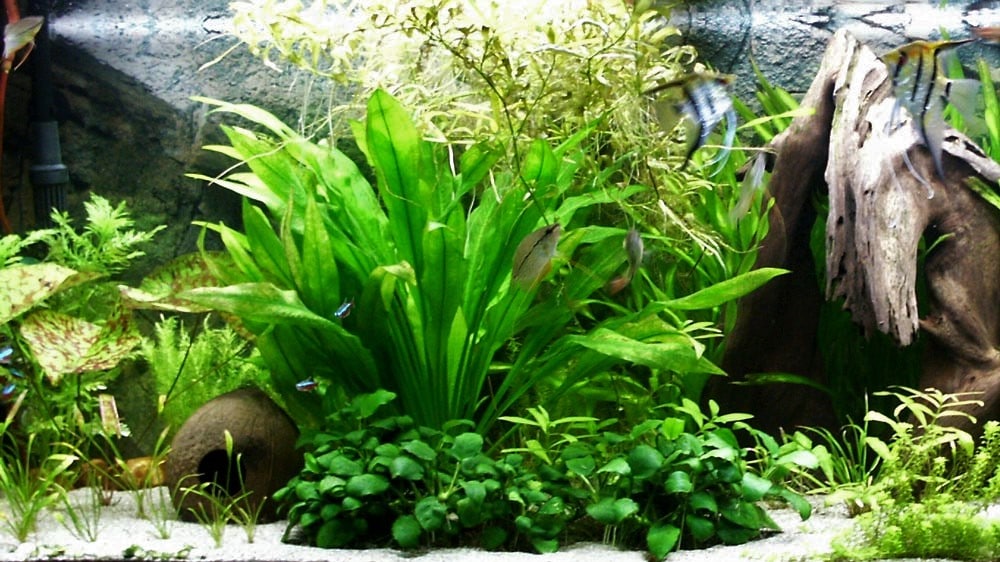Before changing the water in a fish tank, please consult your veterinarian or a pet shop to determine how frequently you should do it. In general, you must check the PH level in your tank regularly. Maintaining optimum salinity is especially vital if you have a seawater tank. It’s essential to change your fish’s water frequently since even though the water in your tank seems to be clean, undigested food particles are still there.
Not only will this result in a physical accumulation, but it also results in the conversion of waste into compounds like nitrate and phosphate. Water must also be adjusted to restore essential components and minerals for your fish’s health. Chemicals and nutrients are consumed by the fish or cleansed out from the water over time, causing the pH of the water to change.
Replace 10% to 15% of the water in a smaller tank once a week. Change 20% of the water in a bigger tank once a week. Allow three days for tap water to rest before using before putting new tap water in your tank, utilizing a chlorinator. The most important step to change the water in a fish tank is to prepare freshwater to replenish the aquarium.
Test your water quality daily to verify that the pH levels are balanced. Allowing your tank cleaner or other equipment to run while you change your tank water might cause harm. Remove any debris on the glass within the fish tank using a sponge. Before you replace the water, do this step. One bucket will have freshly mixed saltwater, while the other will hold the water from your current tank. Make sure you don’t take out enough fresh water that you can refill.

How to Change Water in Fish Tank
To maintain your fish happy and healthy for the rest of their lives, you must first understand how to change the water in the fish tank. There are dozens of distinct fish breeds, but each one needs unique tank maintenance and upkeep. It’s crucial to note that your fish’s general health is a reflection of the tank in which they live.
Keeping their tank clean will boost their health and extend their lives. When cleaning, it’s recommended to keep the fish inside the water tank. Removing them creates undue stress for the fish and also the risk of injuring them in the process. Because you shouldn’t need to drain all of the water to wash the tank efficiently, you may leave the fish in the aquarium while you clean.
The chemistry of the water is critical for the health of the fish when it comes to changing the water in a small fish tank, and a severe alteration may be fatal. The most important thing to change the water in a fish tank is to keep things stable. Bring the current temperature of the water as near to the present tank water temperature as feasible, since a sudden shift in temperature may be quite stressful for fish The recommended temperature range for most fishes is 72° to 80°F. Low temperatures make fish more prone to illness.
How Often to Change Water in Fish Tank
Regular aquarium care should include water changes, but how often to change the water in a fish tank will be based on the aquarium’s size and the quantity of fish. Water changes will be required more often in smaller, intensively populated aquariums than larger, poorly stocked ones.
A decent rule of thumb is to replace 10 to 15% of the water every week. If the tank is overstocked, increase the percentage to 25% each week. A poorly filled aquarium may last 2 to 4 weeks without water changes, which should be the absolute limit.
You should make a 25 percent water exchange every 2 to 4 weeks. During the filtration process, there is no need to eliminate the fish. During the purification of water, be sure to mix the gravel and use a silt cleaner. When refilling the aquarium with water, apply Tetra AquaSafe® to remove chlorine and chloramine.
Changing Aquarium Water
Even though the water in your aquarium seems to be clean, stirring up the substrate may reveal a surprising amount of debris. When fish are nourished, food particles settle to the bottom and decay. Meanwhile, the food consumed is ultimately excreted into the water as pee or feces, contributing to the poor water quality issue. These wastes eventually build up in the aquarium as solid debris and dissolved chemicals like nitrate and phosphate.
Changing aquarium water is very necessary for your fish’s health. You should make a 25 percent water exchange every 2 to 4 weeks. During the filtration process, there is no need to eliminate the fish. During the purification of water, be sure to mix the gravel and use a silt cleaner. When refilling the aquarium with water, apply Tetra AquaSafe® to eliminate chlorine and chloramine.
How to Change Fish Tank Water without Killing Fish
The abrupt mortality of fish following water changes is caused by a sudden change in water composition and tank temperature. Furthermore, water fluctuations in aquariums may disrupt the established healthy cycle, leading to increased toxicity and stress. The second factor is the source of additional mortality. The key to success is acclimatization.
Don’t subject your fish to a drastic change. Regular water changes are significant to change the water in a fish tank, despite the slight danger of harming your fish. You cannot jeopardize your fish’s lives or harm their health by exposing them to inadequate water quality. You must understand how to change fish tank water without killing fish.
Keep essential things in mind. Small water changes regularly are more beneficial than a significant water change now and then. I recommend merely replacing 10-15% of the water once a week. It is okay to do a one-third water change monthly to remove any extra nitrate accumulation.
Changing Fish Tank Water
When changing fish tank water, many people mistake replacing all of the water, including the substrate. They can’t ask for a better approach to wash the substrate without draining the tank. A gravel suction is a crucial tool for water exchanges and substrate cleansing, so get a good one. Siphoning is a practical way to replace the water in a fish tank as well as clean it.
A siphon and a bucket are the most important instruments to change the water in a fish tank. For this task, a gravel vacuum with a siphon attachment comes in helpful. A water conditioner, as well as a preheater, are also required to prepare replenishment water. You’ve established the correct pH, and the temperature of the water is just what you want. After that, please place it in the aquarium and call it a day.
How to Change Water in Fish Tank for Goldfish
You’ve likely put delaying to change the water in the fish tank for goldfish for as long as you can. Changing the water might be a chore. It’s time-consuming and dirty, and you’ll wake up the following day to find goldfish feces all over the place. However, a few pointers will make cleaning the water in the goldfish tank a lot simpler. Let’s speak about changing the water in a fish tank for a moment.
Switch off the heater, sieve, or any electronics in the tank. To avoid water from leaking into the outflow, unplug everything. Your heater may explode if you fail to switch it off before emptying the water. Create suction by using gravel vacuum. You may accomplish this using a hand pump integrated into the tubing or by inserting the gravel vacuum’s end into the tank, turning it upside-down, and filling it with water until pressure is formed.
If you like, you may do this process and method 2 in a different sequence. Add the water conditioner to your clean water container. Putting the water purifier in the freshwater before adding it to the tank gives it time to deactivate or eliminate contaminants.
You may throw your old water while your freshwater sits with the water purifier in it. At this time, you may start putting the freshwater again into your tank. To avoid accidentally shocking your fish, ensure that freshwater is similar to the water temperature in your tank. You may connect your electronics again and resume everything after you’ve put in the freshwater. Ensure the water value is increasing enough so that your filter can perform correctly and that your heater’s “fill line” is at least reached.
How to do a Partial Water Change without a Siphon
How to do a partial water change without a siphon on a 10-gallon tank? You may remove part of the water from the tank using a bucket. Then, using the bucket, fill the tank with freshwater. Ten gallons of water are usually held in a typical bucket.
Spin the water in the tank by hand for a few seconds before pouring in freshwater. Continue the procedure till the tank is completely filled, then turn on the heater and filter. We’ve completed a partial water change.
How to Change the Cold Water Fish Tank
To change the cold water fish tank, float the sealed bag in which your fish arrived on the level of the aquarium’s water. Allow 10 minutes for the bag to settle before opening it and adding a cup of aquarium water. Reclose the bag and float it for another 10 minutes. Repeat the last step till the bag is filled.
How to Change Water in Fish Tank for Betta
Among the essential things to remember while caring for a betta fish is how to change the water in a fish tank for a betta. Fill a big, clean container halfway with water. For the time being, let your betta’s present container alone. To eliminate chlorine and other hazardous elements from freshwater, use a water purifier. Immediately putting the betta into the water of a different temperature might hurt it. Allow an hour for the container of new, treated water to room temperature before using it to keep your fish safe and happy.
You’ll remove a few of the liquid from your betta’s tank and refill it with some of the new, treated water to perform a partial water change. Slowly add fresh, purified water from the prepared container into your betta’s existing container until the water level approaches the prior status. Changing your betta’s moisture at least once per week is recommended by most experts. To change the water in a fish tank is very helpful for carrying betta fish.
How to Change the Water in a Tropical Fish Tank
To change the water in a tropical fish tank siphon pipe and a bucket are required. You shouldn’t start the siphon tube by sucking the line; instead, search for one that can be initiated by hand. Activate the siphon and place one end in the tank and another inside the bucket on the floor.
A broad bore gravel washing attachment is nearly typically included with an aqua siphon tube purchase. Gravel vases are convenient since they allow you to clean your soil while simultaneously doing a water change. Only one measuring jug might be used in tiny Nano tanks. You’re familiar with the volume, and it’s a fast and straightforward process.
How to Reduce Water Changes In Aquarium
To reduce water changes in the aquarium, maintain your bioload low, simply having fewer waste-producing fish. You should also avoid overfeeding your pet and leaving uneaten food lying everywhere. You should also include living plants to help purify the water. Seachem Prime may also be used as a short-term remedy since it can detoxify nitrites, ammonia, and nitrates in as little as 48 hours per dose.
How to Properly Change the Water in a Fish Tank
The most crucial step to properly change the water in a fish tank is to prepare freshwater to replenish the aquarium. If the water is chlorine-free, it is entirely safe to drink. Chlorine compounds are poisonous to fish. Suck water from the bottom using the siphon’s suction slightly above the substrate layer.
Every four weeks, I suggest a 30–40% water change. It’s important to remember that replacing more than half of the water isn’t a good idea. The last step is straightforward. You’ve got a pail of water ready to put in the aquarium. These mentioned steps are used to change the water in a fish tank.




